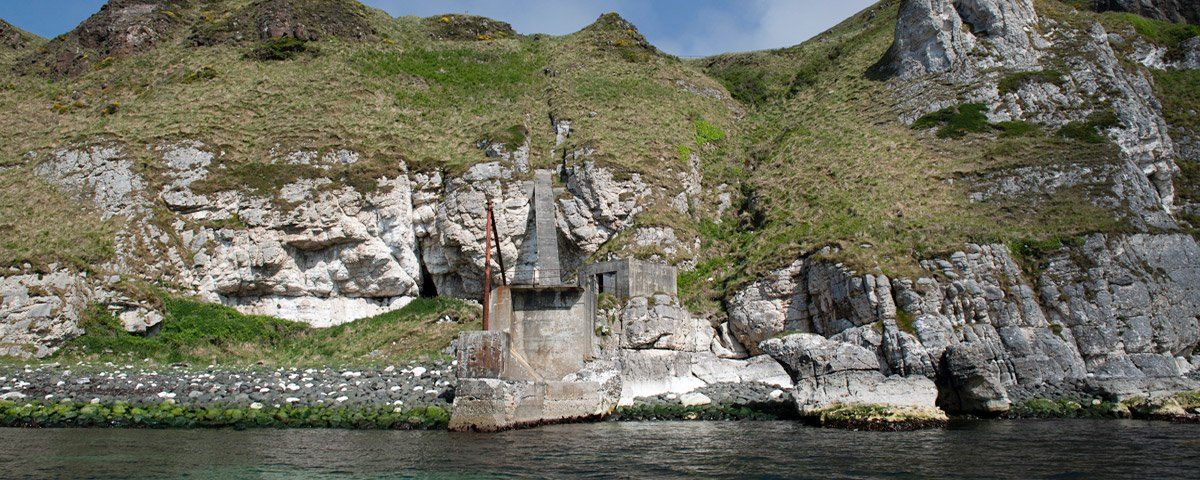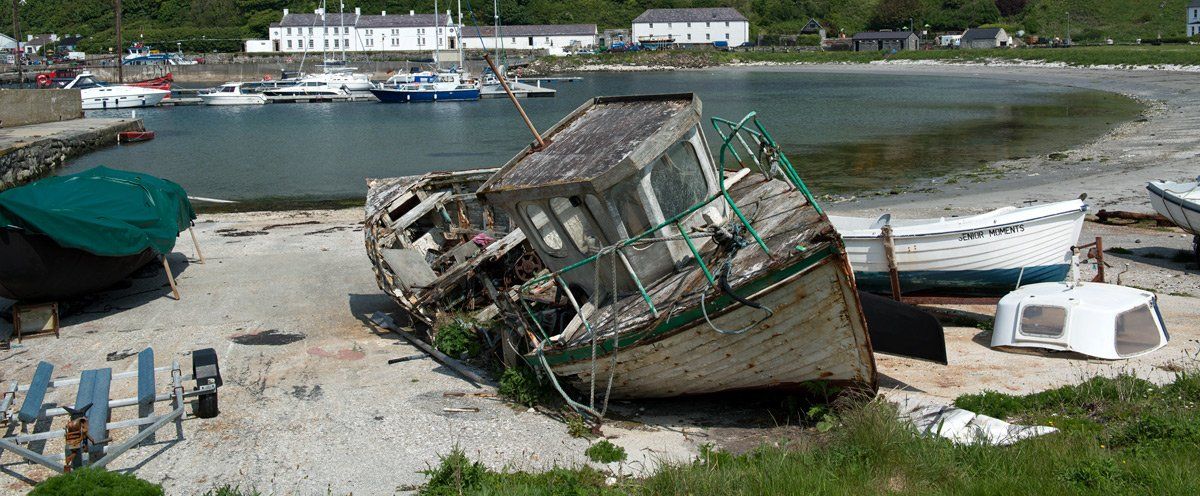Rathlin History
Rathlin or 'Raghery' as my grandfather would have called it, lies like a stepping stone between North Antrim and Scotland, at its closest point is only three miles from Fair Head and sixteen from the Mull of Kintyre. The eight-mile-long limestone and basalt island is steeped in history which is evident in the standing stones, cairns, passage tombs, cashels, ancient church and castle sites that speckle its landscape. The island has lots to offer those who like to explore and discover, it is full of intrigue and stories from an ancient unwritten past, one of the most famous is that of Robert the Bruce, who, while allegedly hiding in a cave on Rathlin was inspired by a spider to return and fight for Scotland which he subsequently did at the battle of Bannockburn.
Over the centuries its strategic position has brought turmoil and bloodshed from warring Scots, Irish and English forces, as well as raids by the Vikings. A family whose name is connected to Rathin is the Gage family, the island was leased to the Reverend J Gage in 1746 and as a landlord he made improvements through agricultural, building the harbour and other buildings such as the manor house. The island did not escape the effects of the potato blight which forced hundreds to leave, between famine and a drop in fish stocks, the population halved within twenty years. A memorial plaque records the emigration of 500 islanders between 1845 and 1848. One migration was arranged by the Gage family who provided the emigrant ship Napier, that took islanders to St. Johns, New Brunswick.
The island was used by Marconi in his development of wireless telegraphy. The world's first transmissions from land to land across the water was achieved between Ballycastle and the East lighthouse on July 6th 1898 by his two assistants George Kemp and Edward Granville, and John Cecil of Rathin who was employed by Kemp. Tragically Edward Glanville accidentally fell to his death while out along cliffs. The island was part of the ancient kingdom of Dalriada the boundary of which stretched from Bushmills to Glenarm and over to Argyll and Bute in Scotland. The kingdom had expanded from constant raiding across the north channel by the Scoti, a tribe of people that gave Scotland its name, over thousands of years migration has taken place between North Antrim Scotland and the Isles.
The kingdom reached its peak around 600 AD when King Aidan was in power, he had succeeded his uncle Congall, it was Congall who gave Iona to Columba where he established a Christian settlement that sent monks out across Europe to spread the message of Christ. Before Congall another king of Dalriada, Fergus, gave land at Armoy to St. Patrick who founded a monastic settlement there, Fergus became one of the first Irish kings to adopt the Christian philosophy and was the first Irish king to rule part of Ireland from Scotland.
The wildlife and natural environment is something to behold, from a colony of seals basking on rocks at Rue Point to vast colonies of seabirds nesting at Bull Point or buzzards and hawks hunting above rare orchids on Altnacarry Head. Its shorelines and landscapes are a naturalist's paradise and its ambience priceless. The island has a growing population of hares including the 'golden' hare, a variation that occurs locally and is living proof of the genetic link to the European mountain hare from which all our hares originate, these hares would have turned white in winter.
In recent years the underwater world around the island has been recognised as one of the most important sites for maritime life in Europe, a study discovered twenty-eight new species of sponges, three of these species do not occur anywhere else in the United Kingdom. The north wall at the back of Rathlin drops vertically in places to 200 metres. Many shipwrecks have taken place around the island which in summer attracts wreck divers from all over the world. The most famous being HMS Drake, a 14,100 ton First World War armoured cruiser which was torpedoed of the North Coast and sank in Church Bay.






